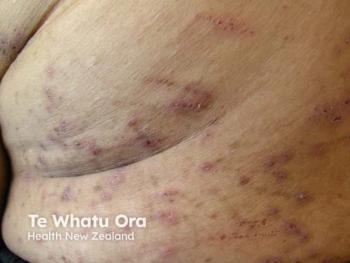
Soft-tissue augmentation need not be a bruising experience
National report - While soft-tissue fillers offer the uniquebenefit of providing fast correction for busy patients who don'twant to have the down-time for a face-lift, bruising can throw amonkey wrench into the best-laid plans for stellar patientsatisfaction.
But just a few proactive measures can keep that bruising to a minimum and send patients out into public without displaying the telltale signs of having had work done, according to Ranella Hirsch, M.D., a cosmetic dermatologist based in Cambridge, Mass., and the vice-president of the American Society of Cosmetic Dermatology and Aesthetic Surgery.
"With the exception of pain, the biggest absolute no-no in my practice is bruising because people want to get back into circulation - that's precisely why they don't want a face lift," Dr. Hirsch tells Dermatology Times. "We've learned that there are a lot of different ways to minimize the bruising."
Hyaluronic acid fillers such as Restylane (Q-Med) and Hylaform (Inamed) can present a particularly significant risk of bruising, but one way of minimizing the effect is to use them in conjunction with collagen fillers, such as Cosmoderm (Inamed) and Cosmoplast (Inamed), which have the added effect of stabilizing platelets and, thus, mitigating some of the purpura.
"If a patient is coming in for two syringes of one product, we might use one syringe of each for the benefit of reducing bruising. There are also pain reduction benefits since the synthetic collagens contain anesthetics," Dr. Hirsch says.
Another important anti-bruising method, which Dr. Hirsch credits to Botox (Allergan) pioneer Jean Carruthers, M.D., is to simply hold pressure on a vessel, manually, for about three to five minutes following the treatment. While the external bleeding may appear to be stopping, there is often a little more blood under the skin, and that is what causes the bruising, Dr. Hirsch says.
"You get the clotting cascade going by applying the pressure, and the effort can result in as much as a 90 percent reduction in bruising," she says. "By taking that small amount of extra time, the difference in terms of bruising is like night and day."
Influential injection techniques
The injection technique also plays a role in bruising - the smaller the needle, the less substantial the bruising, and there is the added benefit of reduced pain, Dr. Hirsch says. For Botox injections, for instance, Dr. Hirsch's practice never goes below a 30 gauge needle and often substitutes a 31 gauge or 32 gauge needle.
"As a standard of practice, we use the smallest needle that's appropriate," she says.
If and when bruising does occur, dermatologists still have the chance to redeem themselves with what Dr. Hirsch calls her "secret weapon" - Dermablend make-up products.
The coverage make-up, known for helping to mask even things like port wine stains, is waterproof and Dr. Hirsch says she gets tremendous patient satisfaction from the results.
"It literally covers everything," she says.
Added anti-bruising tips
Some additional tips to reduce bruising include:
"We encourage our patients to start eating pineapple a week before treatment," Dr. Hirsch explains.
"Don't rush, that"s really the key," Dr. Hirsch advises. "When you rush, you get more bruising and you tend to have more pain, and that little extra amount of time adds so much in terms of patient satisfaction."
Disclosure: Dr. Hirsch reports no disclosures relating to this article.
Newsletter
Like what you’re reading? Subscribe to Dermatology Times for weekly updates on therapies, innovations, and real-world practice tips.


















